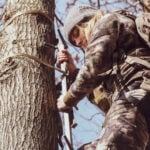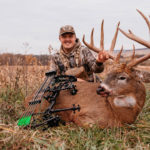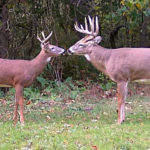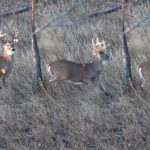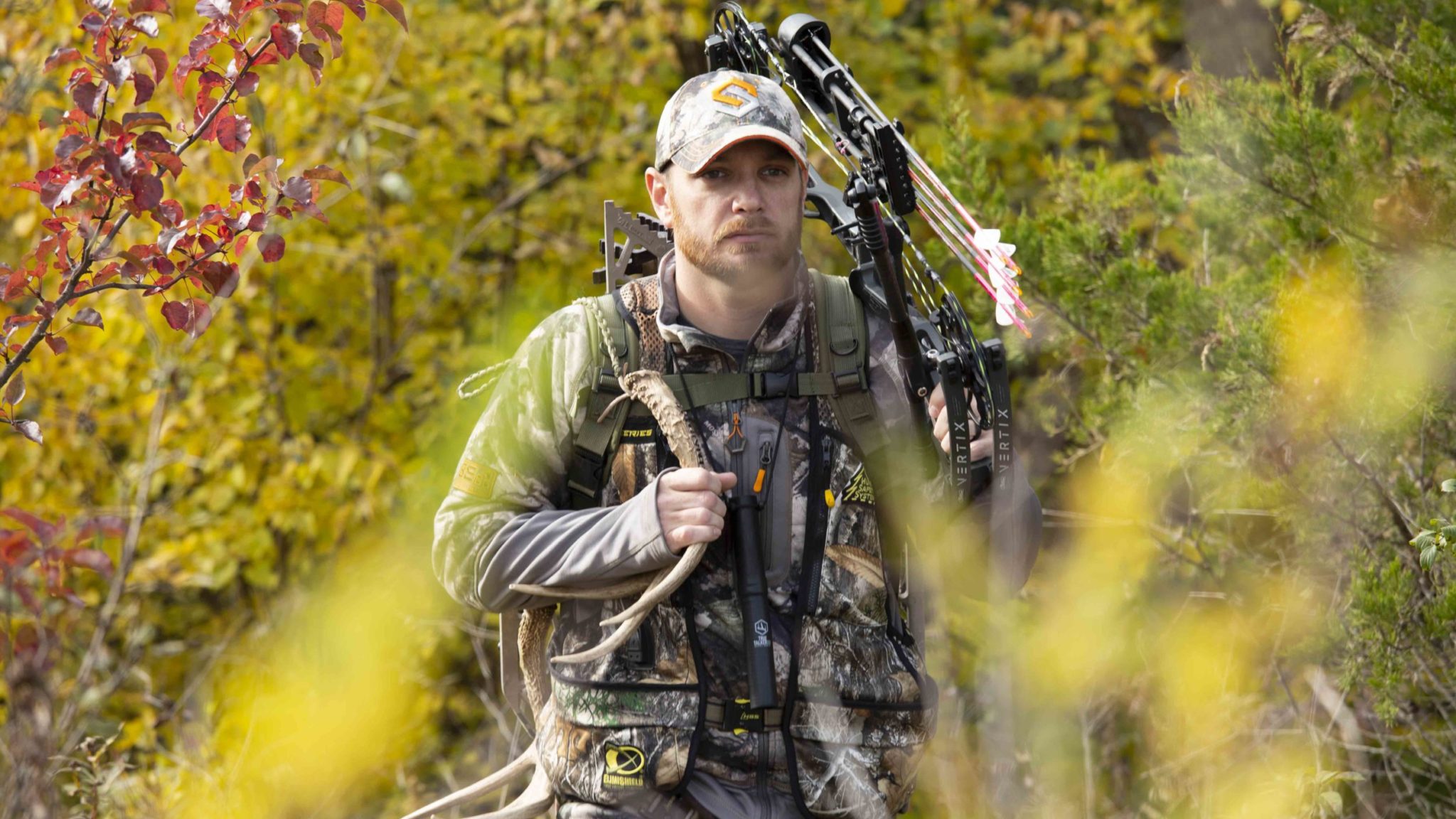
Although it’s been awhile, one deer hunter can still remember how seductive the thought of chasing whitetails with a bow and arrow was as a young boy.
The very idea of it consumed him and he often fantasized about loosing himself in some remote corner of a lonely forest. Once there, he would partake in the ultimate chess-match with a wise-old, big-timber buck.
His antlers unlike anything the young hunter had ever beheld; dark, heavy, wide and tall. A few clever moves and one well placed arrow was all it would take….and he would forever be his.
Eventually, he sought to turn that dream into reality. So like any enthusiastic teenager, he began to read and scrutinize everything he could get his hands on pertaining to bowhunting this elusive creature.
He wanted to understand the whitetail buck, get inside its head and know what it was thinking before it was even thinking it. He wanted to stand in that lonely forest for real, and watch his arrow as it zipped ominously through the cool autumn air.
He wanted nothing more than to fulfill his dream of harvesting a “Mountain Buck”. Now, some 20 years later, he has learned one cold hard truth….be careful what you wish for.
It is truly hard to put into literature exactly what it’s like trying to tag on one of these phantoms. These are various lessons that the deer hunter has learned in the past 20 years while hunting mountain bucks.
With any luck, those who’ve never chased whitetails in a mountain setting will be entertained by the deer hunter’s exploits. And those who have, well, you understand that as hard as initial success is to come by, the real challenge is finding a way to achieve it again, and again.
Hopefully, somewhere in the midst of the following truisms, you will discover the key to help you do just that.
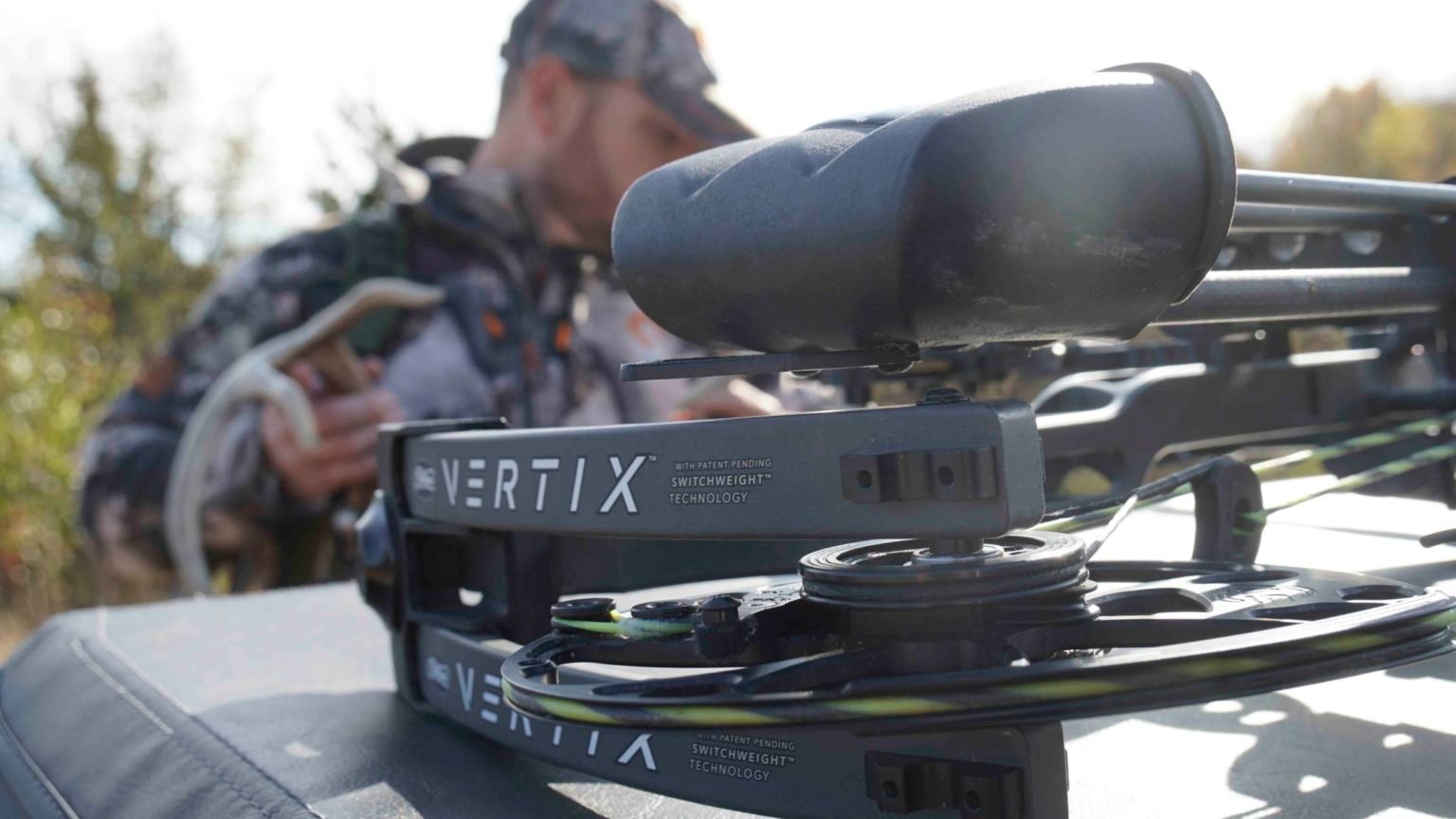
Essential Mountain Buck Gear List
With so many products promising to give you the edge you need, it can be hard figuring out which ones actually deliver on that vow.
Adding to the uncertainty, is the back and forth promotion by high pro-file “celebrity” hunters; advocating one item this year and a different one the next. This section isn’t about promotion. It’s about sharing with you the gear hunters deem vital to their success as mountain bowhunters.
Seeing is Not Believing
Unlike most parts of the country, you won’t have the luxury of long-range observations. In fact, the very deer you’re after could pass by as little as 50 yards away and you would be none the wiser.
Steep ridges and points, combined with heavy thickets make it hard to get a good look at anything that isn’t setting right in your lap. That can be tough, mentally, for the aspiring big-woods bowhunter.
When you aren’t seeing much action do you stay or do you go? Honestly, the best advice is to utilize as many trail cameras as possible, and get to know your area intimately. Those two factors will give you the confidence to stay on stand even though you haven’t actually seen a buck with your own eyes.
Looking back over the bucks the deer hunter taken, each one was shot the very first time he laid eyes on them. Think about that.
Camo Everything
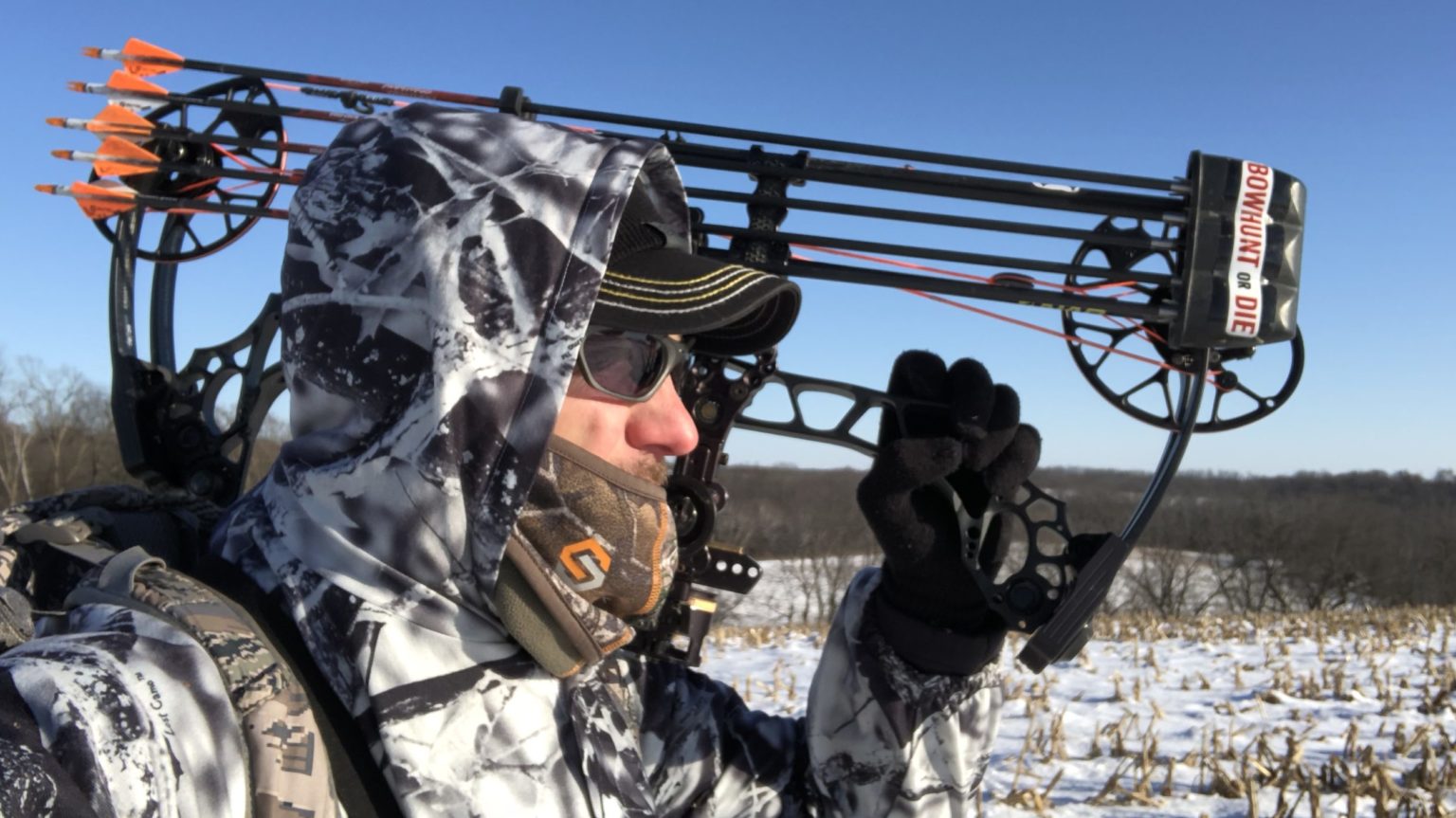
When a buck walks by your treestand in hill country, he is just as likely to be eye level with you as he is to be 15 feet under you.
Mountain Bucks can approach from any direction and finding a way to put them underfoot, every time, is an art hard to master. As a result, it is crucial to pick a camo pattern that merges with the terrain.
More importantly, the overall color scheme must match a multitude of conditions. For example, since a buck can look up at you, down at you, and side-hill at you, try to choose a color-tone that blends well with all of those situations.
Most tend to favor those camo patterns utilizing a lighter, more natural feel, with browns and grays being the dominant color.
Forget the Wind
Naturally, when you here someone say “just hunt the wind”, you have to laugh because they have no idea what its like to do that in the Eastern mountains.
Honestly, when you hang a treestand, wind direction is the last thing you consider. And you never climb out of a treestand if it suddenly shifts directions. If you did, you would spend very little time actually deer hunting.
As mentioned earlier, bucks can come at you from any direction. Setting up with a favorable wind to cover all of the possibilities is next to impossible.
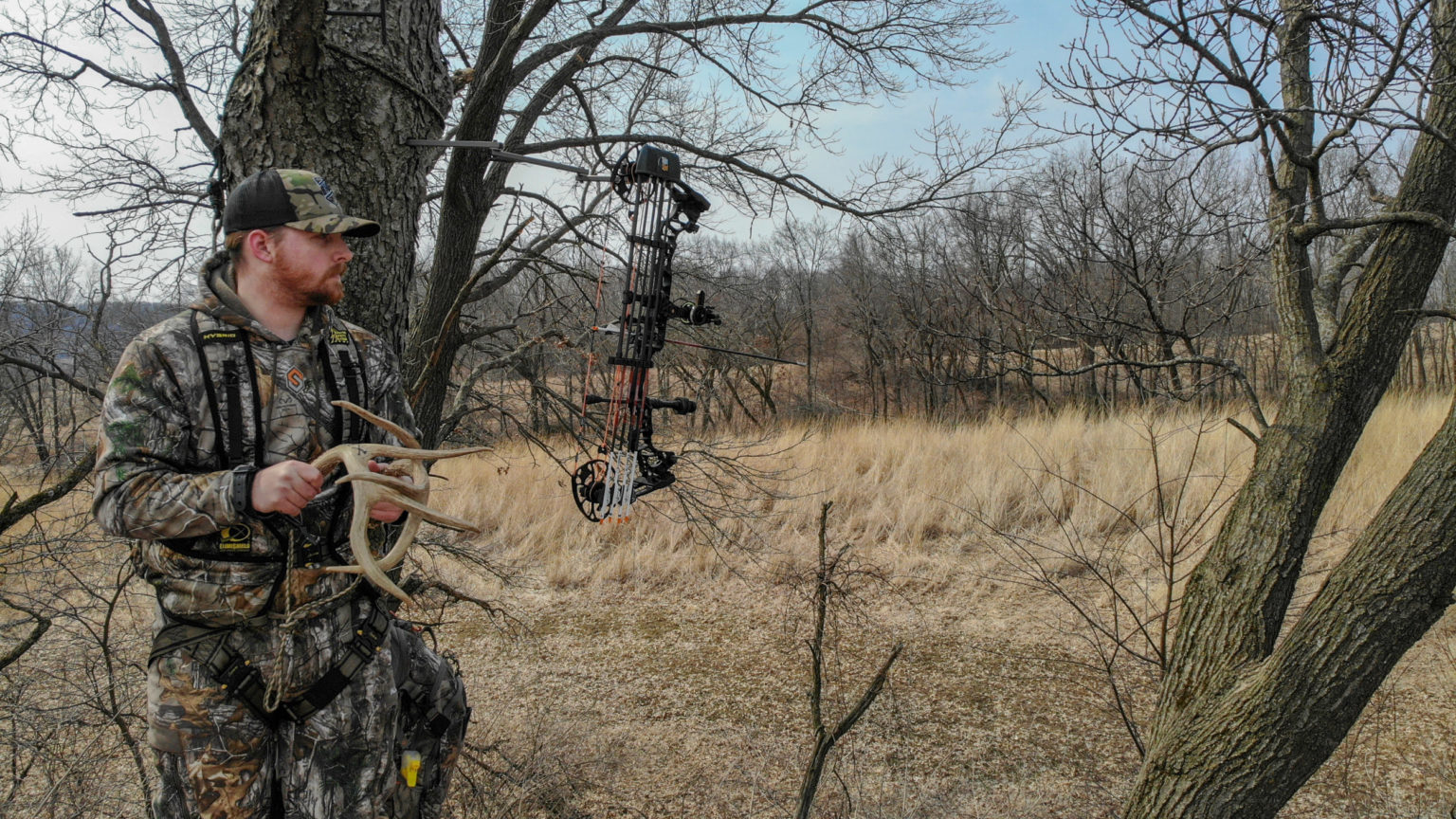
Good Camo
“Good” means a pattern that’s effective when viewed from a variety of angles; not just straight up. As mentioned earlier, if a buck notices you, he will likely be looking downhill or at you from the side.
Sometimes he may be very close to eye-level. Consequently, not only must you blend with the very tree you’re hiding in, but the ground behind you as well. That may sound odd, especially to a flatlander, but much of the terrain is such that you’re really only above an approaching deer’s line of sight on one side of the tree.
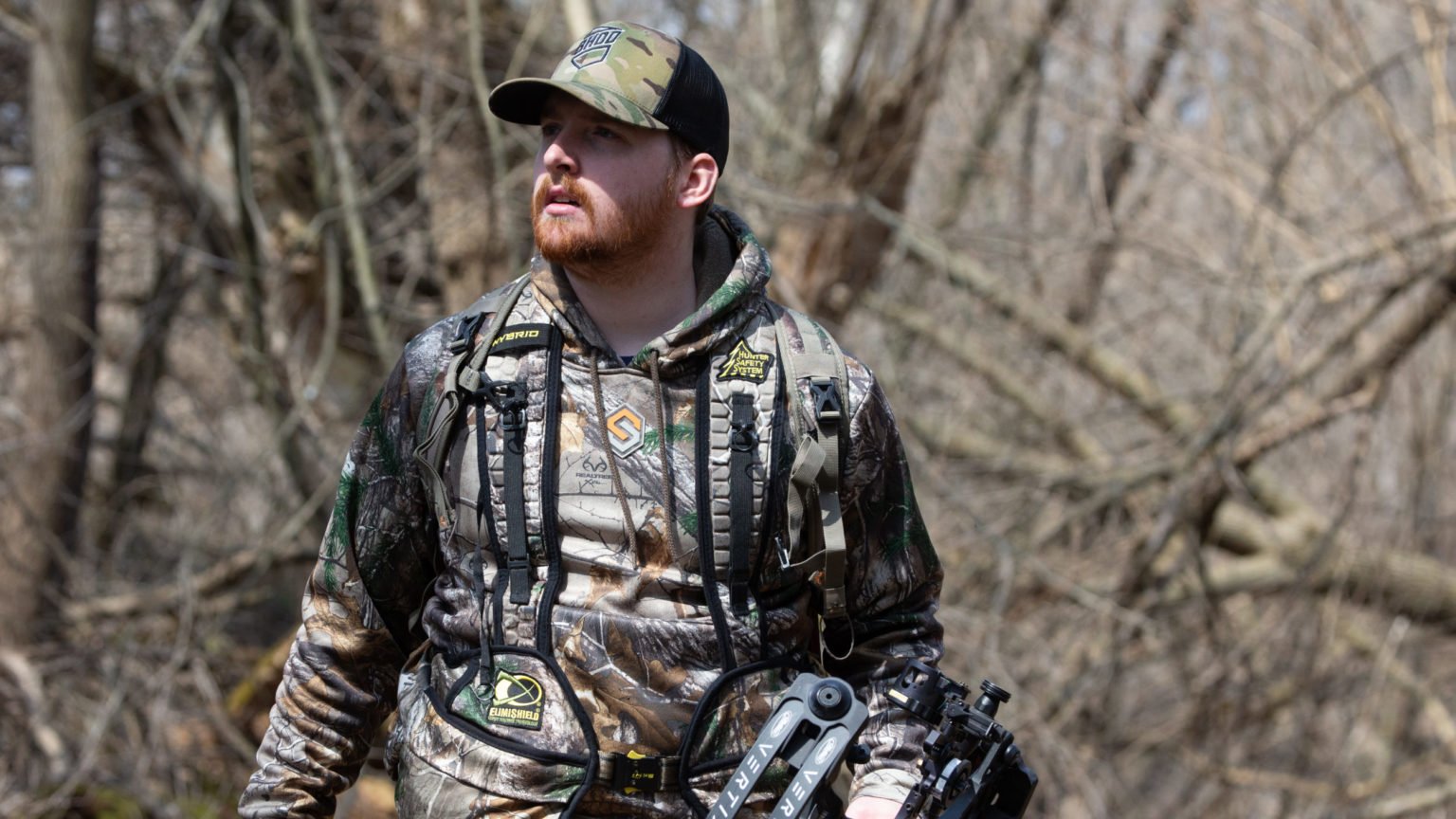
Sure, you can easily hunt atop the main ridges where the wind is constant; but many have played that game.
They have found that wise old bucks often avoid such easily accessed areas like the plague because most hunting pressure originates there. Therefore, if you are going to hunt where the deer are, you have to hunt where the crowds are few and the wind most often swirls.
Now before you write this deer hunter off as crazy, he does have a plan. It is simply a matter of suppressing your human scent to the point that you are no longer perceived as a threat.
The Kiss of Death
Waiting until the pre-season to do your scouting is worthless. There are no food plots to monitor from afar, therefore piecing together an early season travel pattern is impractical.
Not only will scouting at this time put most mature bucks on high alert, but it will also deceive you because you will be hanging treestands based on information that is going to change in a few short weeks.
For example, when natural cover and food sources change so will travel patterns. Scouting in the post-season will allow you to gather the most pertinent information regarding treestand placement.
Does are Key
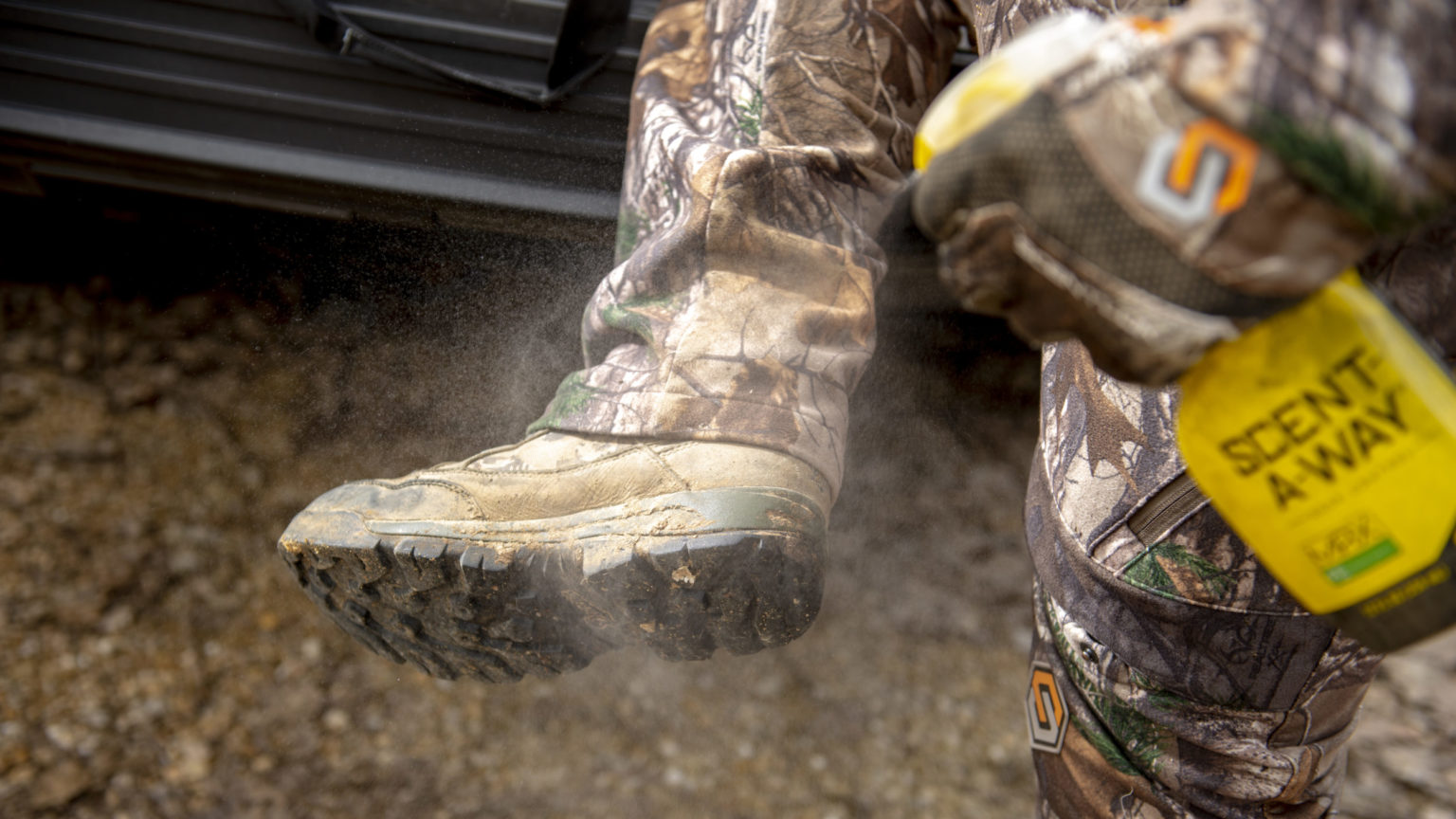
For years deer hunters have tried to fit a square peg in a round hole.
What that means, is that they would read the latest “how-to” strategy in a hunting book or some other means of informative literature or media and then immediately try it out for themselves.
The only problem was that many of techniques people read about were written by guys that had never hunted in a mountain setting. To their credit the theories and tactics are convincing and valid, but they did little to help you fill more tags.
The problem was that there were too many variables. You see, in the places mountaineers hunt, there are no well defined bedding or feeding areas. Deer come and go mostly at random because their choices in both are almost limitless.
Oak trees don’t produce acorns year after year, and deciphering which heavy thicket is being used on the day you plan to hunt can be a nightmare; to say the least. It took a long time, but one hunter finally decided to build his strategies around the one universal truth regarding whitetail bucks….the desire to breed. Once he started concentrating on that, his success rate increased as well as his shot opportunities.
The Inevitable
One thing you can count on is bumping deer on the way to your treestand. No matter how hard you try to ensure that your entry and exit routes are as low-key as possible, you still seem to run into deer when traveling to and fro.
Some deer hunters used to think that the encounters were simply a result of haphazard bedding and feeding locations. Unfortunately, most hunters have no idea what to do about it. Then guys started to understand that most of these locations (if viewed from above) were spread out very similar to a shotgun pattern.
Meaning, the closer you get to the center, the more concentrated things become. As it turned out, the “fringes” of the shotgun pattern was where one hunter was experiencing most of his encounters. Lucky for him, he wasn’t venturing close enough to the “center” of the pattern to completely blow his setups.
If your hunting big-timber and you find yourself frequently bumping deer, you might want to rethink your treestand location. Chances are probably good you’re closer to the center than you think. Initially, hunt the outside perimeter of the pattern until you feel it is time to move closer. This will usually be around the time breeding has begun; after the chase phase has ended.
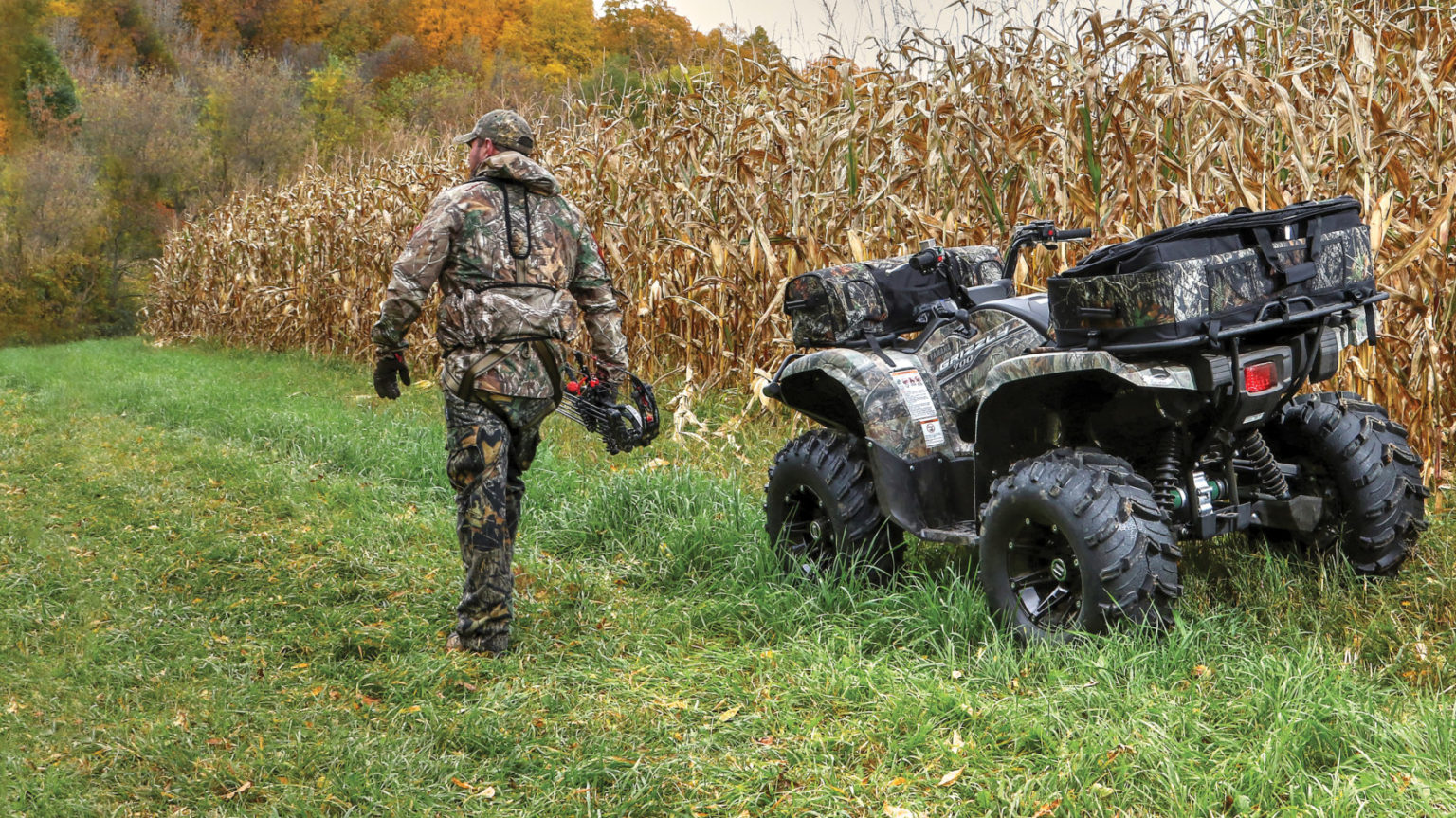
Conditioning Means Everything
Forget about hunting elk out west. If you’re not in shape when you hit the mountains of the East, you’re going to suffer. The bottom line is this. If you are out of shape you’re not going to go into the nasty places that gnarly mountain bucks like to hang out.
What you are going to do is settle for the easy to get to spots that the majority of guys gravitate toward. The deer know this and therefore steer clear of those places for much of their daily travels. Get in shape and you will go where the deer are instead of where you wish they were.
Treestand Height Means Nothing
So many deer hunters are under the illusion that treestands have to be hung 15 feet off the ground in order to avoid detection. Bologna! Try that in the East and you will be 30 feet off the ground on one side of the tree and 15 on the other.
That situation virtually eliminates half of your shooting area, so forget about setting your treestand a certain height. Instead, concentrate on your background, your camo, and any natural funnels that will diminish approaching deer’s ability to locate you before the shot occurs.
Get down on the ground and walk past your stand from all directions. Look up at it, like a buck would, and you will quickly see what he will see. Next, adjust your height and/or which side of the tree to place your stand based on this information. You will see that higher is usually not better due to fluctuations in the terrain. Most hunters drop deer from less than 12 feet off the ground.
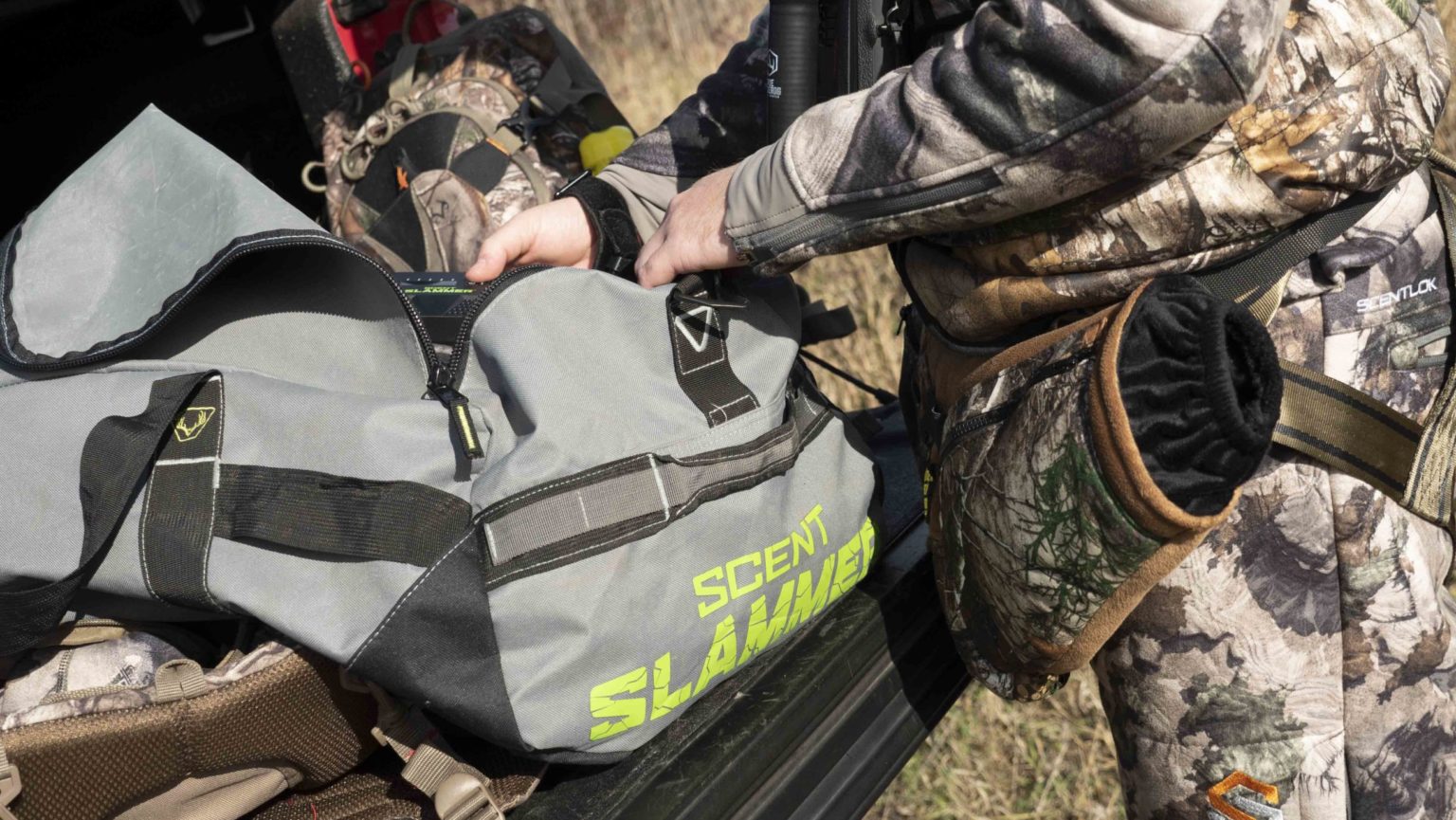
Scent Suppression System
As alluded to earlier, the mountain bowhunter must take his scent control measures to the extreme. Forget what the rules of the mid-west say. If you’re going to hunt where the majority of Goliath mountain bucks hang out, you’re going to encounter swirling winds.
You see in hill country, the locations that hold steady wind currents are usually flat, easy to get to…..and beset with bowhunters. One hunter accepted this fact long ago and decided that unless he found a way to make deer think he was further away than he actually was, he wasn’t going to be very successful.
One hunter reflects upon his own experiences.
“Luckily, that was about the same time that Robinson Outdoors introduced a new item that promised to hide your scent from the nose of wary whitetails. From day one I noticed a difference while wearing their ScentBlocker carbon suit.
Each year it has gotten better, my overall scent suppression system has gotten better, and most importantly, my success rate has vastly improved. For 2010, ScentBlocker introduces their greatest technology yet….“Cold Fusion”.
It is with out a doubt the most technically advanced carbon fabric to date. It also promises to put to rest any doubts regarding the effectiveness or regeneration of carbon garments.”
For more info on this and a multitude of scent suppressing products go to Scentblocker’s Website.
Hunting Ugly
Some hunters to try and “will” deer to move through a certain area simply because it looks like all of the picturesque places seen on T.V. and in hunting magazines. They innocently think that is where the majority of bucks are killed; maybe so.
That’s why “hunting ugly” is a pretty good motto to live by. After all, that is where the vast majority of eastern giants like to spend their time. Only during the chasing phase will they be somewhat more visible outside of the dreadful places they normally call home. Don’t expect a picture perfect setting. Those are few and far between and routinely hold the least amount of deer in hill country.
They Notice Everything
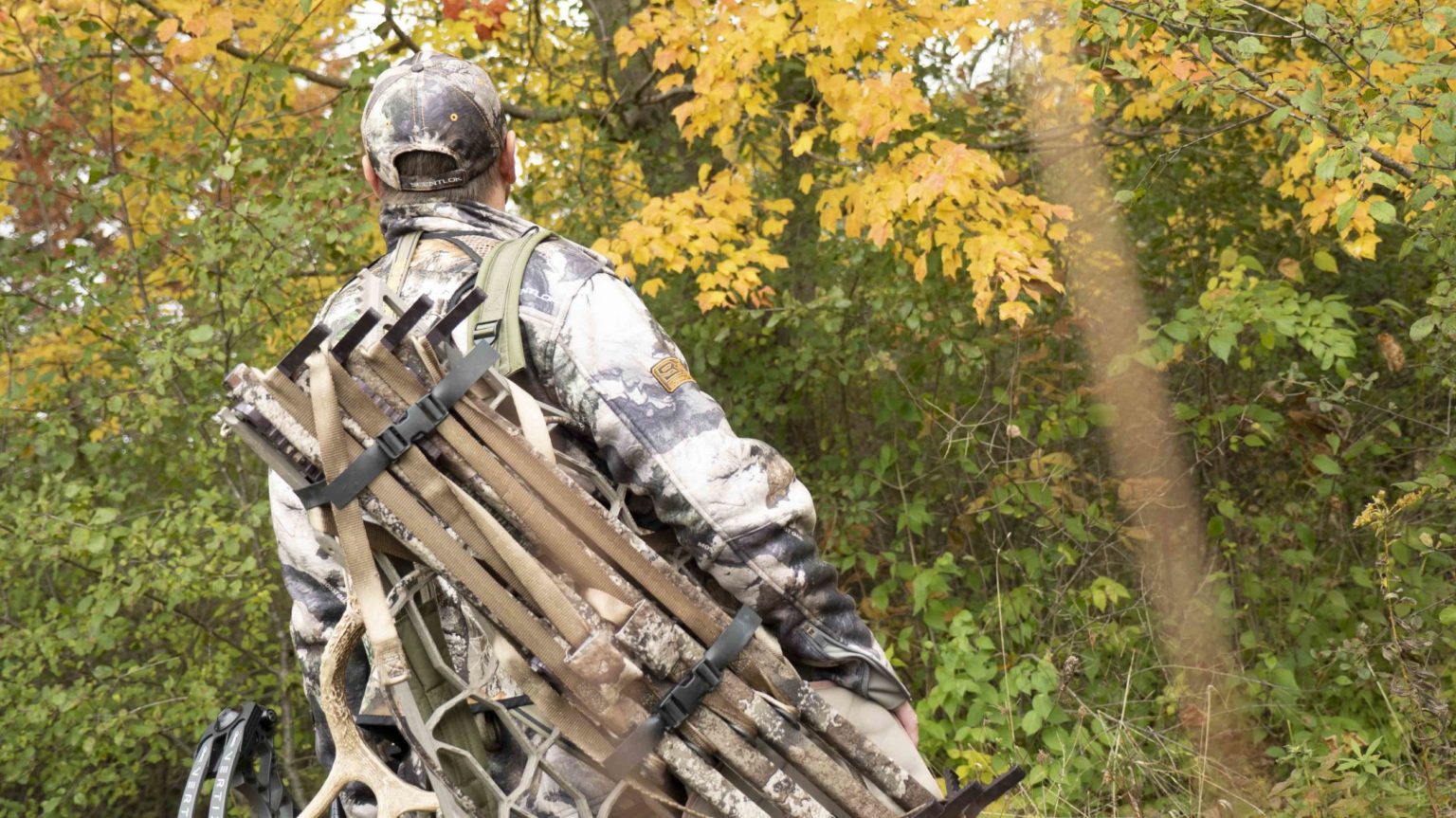
Because of the remoteness, wilderness deer simply aren’t accustomed to human interaction and therefore become extremely sensitive to our intrusion no matter how slight it may be.
When they do encounter an individual it usually signifies an attempt on their life. This conditions most of the deer (especially older class bucks) to avoid locations that are routinely occupied.
For example, access roads, easy to reach treestand locations, and most open timber are rarely visited during daylight hours; simply because deer know these areas harbor the most activity and can be detrimental to their wellbeing.
On top of this, the effects of poaching also come into play. Again, the isolation of big-timber lends itself to this illegal practice.
This pathetic excuse for sportsmanship is evident in a good number of deer harvested each year. This harsh reality is only mentioned because it is important to understand that for a mountain buck, there is really no such thing as a “non-threatening” encounter.
Most Sign is Useless
Hunters have spent many long hours overlooking “hot” deer scrapes, only to go home dejected and empty handed.
Buck rub lines, while informative in their own way, have yielded mostly the same results. For the most part, the majority of big-woods sign plays a very small role in the overall scheme of things.
Understanding the lay of the land and how deer use it (funnels are key) will bring about more success than any scrape or rub-line strategy ever could. When you take the “topography” approach remember this, start by eliminating areas the deer are least likely to travel through.
This will make the task of finding the likely travel routes much easier.
Expect the Unexpected
You don’t have to actually loose an arrow in mountain country to experience some excitement. Expect the unexpected.
It could be a protective Black Bear with cubs in the pre-dawn darkness, an inconspicuous crack in the earth (mine break) under a innocent pile of leaves, or a treacherous ATV ride that somehow gets a little to crazy; sending your high dollar means of transportation rolling down a rock-strewn hillside.
Make no mistake, the mountains are tough, the hunting is tough, the animals are tough, and getting there and back is tough; but that’s not the hardest part.
The Real Work
Without a doubt, the real work doesn’t start until your buck hits the ground. To make things easier you need a plan when it comes to retrieving your game.
You’ve got two choices….uphill or downhill. Downhill, well, that one isn’t so bad depending on where your transportation is.
On the other hand, “uphill” is going to make you work like you’ve never worked before. Forget about rolling out your ineffective “deer cart on wheels” and whisking away your trophy. Strip down to your base-layers and get ready for some lung busting, leg burning, crawling, grabbing, spitting and dragging.
This is an important aspect of the hunt and should be well thought out beforehand. It is also a top reason the majority of deer hunters stay “close to the road”.
Dependable Bow
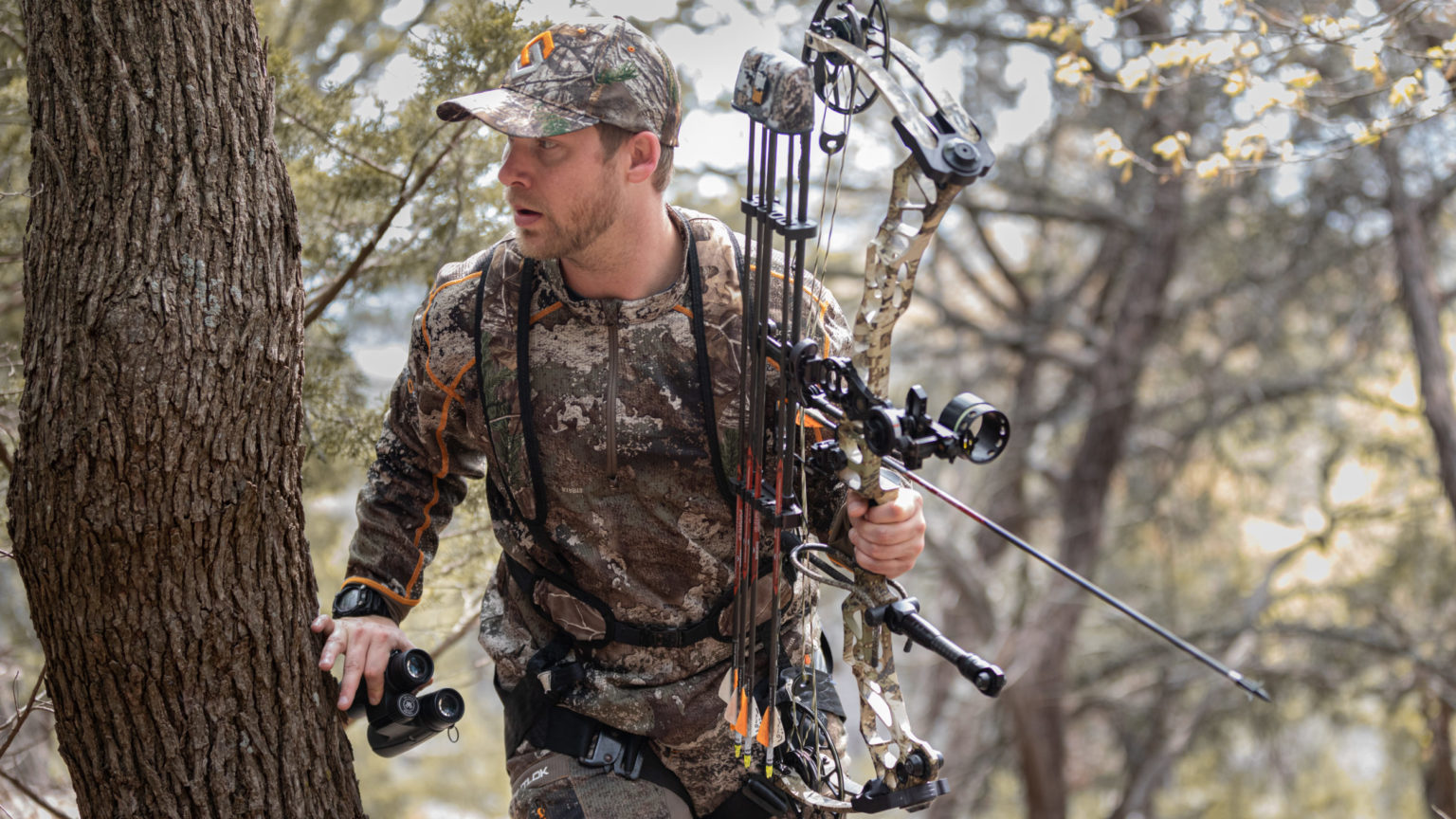
If you think this is the part where you are told what the best bow on the market is…you’re wrong. Well, almost.. When it comes to bowhunting, you probably understand that if you’re not confident in your bow, no matter what brand you choose, it can greatly influence you’re ability to perform at your best.
Chasing mountain bucks demands you select a rig that’s dependable. Unsympathetic ATV rides over steep, rocky terrain, will test any bow systems ruggedness. Not to mention clawing your way up and down thicket-choked hillsides for days on end.
Overall the Mathews line of bows fits the popular on-the-move hunting style the best. Through the years they’ve proven to be fast, quiet, accurate and more importantly, dependable.
Elevate It
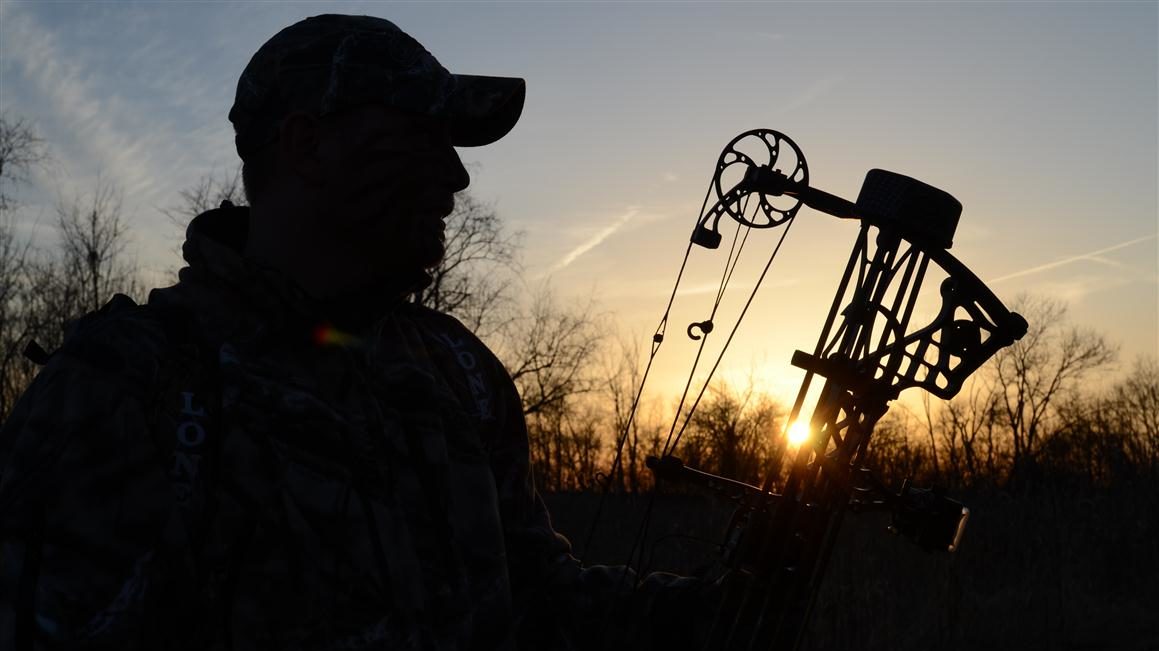
There is nothing simple about taking a shot at a whitetail in mountain country. The slopes are steep and the angle to your target changes with every step the deer takes.
If you spend the summer months in the front lawn, standing upright in your flip-flops and shorts preparing for this type of shooting situation, you are going to have problems hitting what you aim at.
Hang a treestand in the backyard and take every pre-season shot from it. Practicing exactly how you plan to hunt is the only way to prepare for the real thing.
What Matters Most
This is perhaps one of the most important points to consider. However, it doesn’t involve locating a funnel, a preferred bedding thicket, or the perfect tree from which to hang your stand.
What it does entail is never loosing sight of why you got started in this joyous sport in the first place. It’s about taking the time to appreciate and enjoy all of God’s creations when you are in the timber.
Why? Because pursuing mountain bucks will humble you like nothing else and if you base your success or failure on what waits for you at the end of the deer’s blood trail….you will find little solace. There are blessings all around if you stop and look.
This is perhaps one of the most important points to consider. However, it doesn’t involve locating a funnel, a preferred bedding thicket, or the perfect tree from which to hang your stand.
What it does entail is never loosing sight of why you got started in this joyous sport in the first place. It’s about taking the time to appreciate and enjoy all of God’s creations when you are in the timber.
Why? Because pursuing mountain bucks will humble you like nothing else and if you base your success or failure on what waits for you at the end of the deer’s blood trail….you will find little solace. There are blessings all around if you stop and look.
Conclusion
The coolest thing about all of this is that we have merely scratched the surface. Certainly, the mountain buck has much more to teach veteran hunters, and they are his humble pupil.
Make no mistake though; The hunter first described is still that same small kid that fantasizes about a lonely forest, watching his arrow zip ominously through the cool autumn air…..still learning from each new attempt at fulfilling my dream of harvesting a “Mountain Buck”.

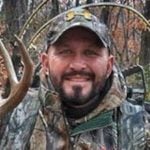 By
By 